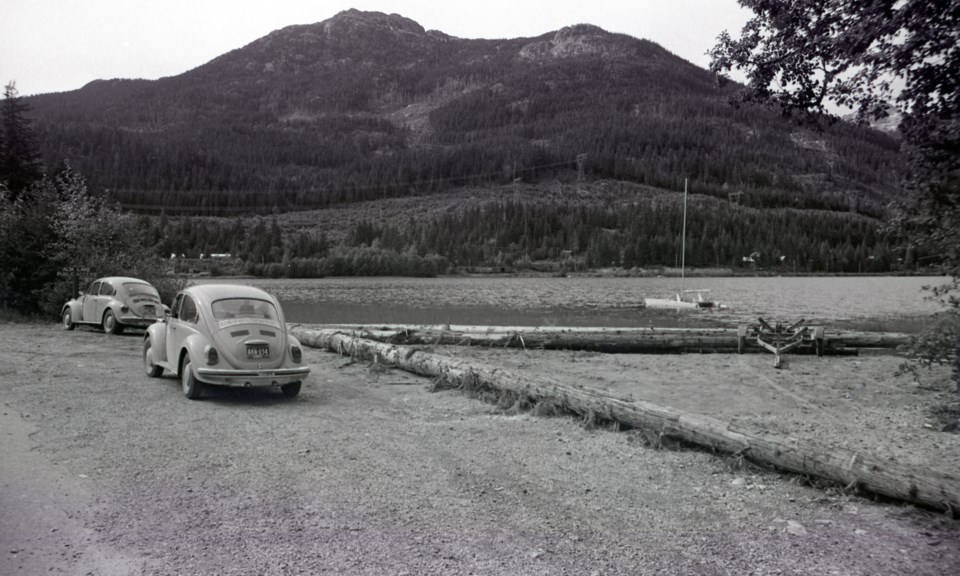Following Wayside Park, the second public access point to Alta Lake created in Whistler was at the end of Lakeside Road in Alta Vista—the area now known as Lakeside Park. Public access to Lakeside Park was first created in 1980, although there were few amenities. When writing about the park in 1980, the Whistler Question specified that, “This area is unknown to many Whistler visitors and residents.”
The relative anonymity of the park went further than the general Whistler population. While Lost Lake Park and Alpha Lake Park featured regularly in the news at the time, there was little information on Lakeside Park. In the one photo of Lakeside Park when it opened, the corresponding article was not even about the park; instead, it was about Councillor Garry Watson’s proposal to create public access to Alta Lake in the area known as Blueberry Park today.
In 1982, the resort’s Parks and Recreation Commission flagged increasing the size of Lakeside Park through private land acquisition as the highest priority for Whistler. It was at the height of windsurfing, when Alta Lake could be seen covered in brightly coloured windsurfers during the summer, and Lakeside was seen as ideal for windsurfer access. Additionally, it had road access and parking, and was situated along the main trail corridor.
When the Whistler Rotary Club received its charter in 1976, one of its first projects was to build three floating docks for public use on Alta Lake. One of these floats was brought to Lakeside Park, where it allowed visitors to get into the water past the horsetails. Part of the proposal was to further clear the horsetails near the dock, add gravel and sand to improve the beach, and put picnic tables and garbage cans in the park. The bathrooms were pump-out septic systems on the shore of the lake, and the road was gravel.
The Whistler Question wrote in 1980, “The Municipality has reviewed the opportunities in the Alta Lake area and without expropriation or purchase of private land property, the recreational opportunity in the Alta Lake area for swimming, especially a beach area for young children, is extremely limited.” A benefit of Lakeside Park was the room for expansion, which could be possible through the purchase of private land on either side of the park.
However, Whistler became more popular, and the land more expensive—and eventually out of reach for municipal coffers. Still, it was very clear that more park space was needed on Alta Lake, and in 1984, the idea of a referendum was posed. The proposed referendum would have a long-term policy question on how to reconcile the needs of residents in Alta Vista with the needs of tourists flocking to the beach.
This was a particularly important question when a rezoning application was submitted to council to change one of the waterfront properties from residential to commercial. Not only would the busy restaurant proposed in that rezoning mean more traffic in the area, it could set a precedent for rezoning approval, increasing the lot value of the area and making the plan to buy waterfront land for parks economically unfeasible. Mayor Mark Angus said to the Whistler Question at the time, “How do we ensure that we don’t buy a 60-foot lot for $600,000? We want the waterfront for the use of the public.” (If only 60 feet of waterfront was only $600,000 today!)
Go past Lakeside Park on a warm, summer day and you will quickly see it is no longer Whistler’s forgotten park. Bodies are regularly packed into every inch of the grass and docks with people arriving early to claim their space.
The expansions proposed to triple the waterfront area of Lakeside Park were never fully realized. Instead, the municipality acquired the land for Rainbow Park on Alta Lake in 1987—which is a story in itself.




